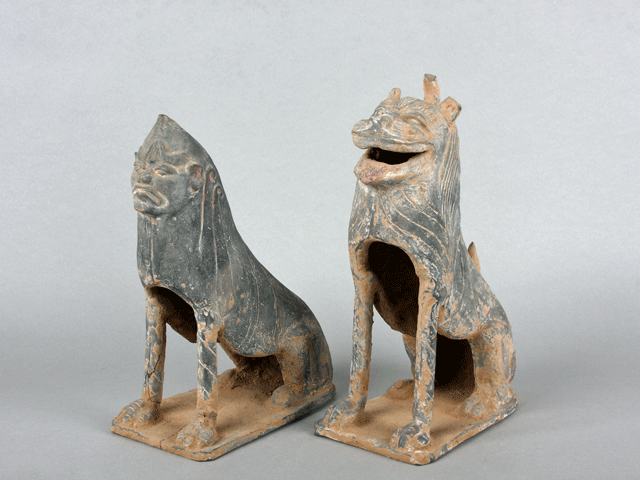
2012.91.44, Zhenmushou, painted terracotta
Eason Eige collection; photo by B. Bernard

2012.91.44, Zhenmushou, painted terracotta
Eason Eige collection; photo by B. Bernard
Pairs of Zhenmushou were placed at tomb entrances. These often demonic-looking crouching figures include attributes of actual animals (such as dogs and deer) and sometimes have human faces. Based on Chinese writings, some scholars suggest that the figures kept the spirits of the dead from roaming. They are found facing away from the tombs, however, so instead they may be tomb guardians. Either way, they are another example of mignqi (tomb offerings).
The two figures were made during the Five Dynasties and Ten Kingdoms period, a name that reflects the political breakdown between the Tang and Song dynasties. In the northern heartland of the old Tang empire, would-be replacement dynasties proved unstable. In the south and west, the country fragmented into ten lesser kingdoms that at least proved fairly stable.
These two figures are so mismatched, we very much doubt that they're from
the same tomb. That doesn't stop us from enjoying the marked contrast in their
expressions! The taller one is about 9 1/2 inches (24 cm) tall. To examine
the figurines in more detail, please click on the thumbnail photos provided
below.
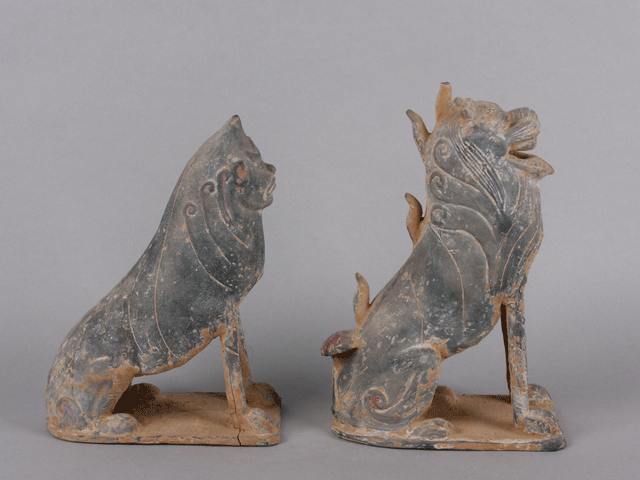
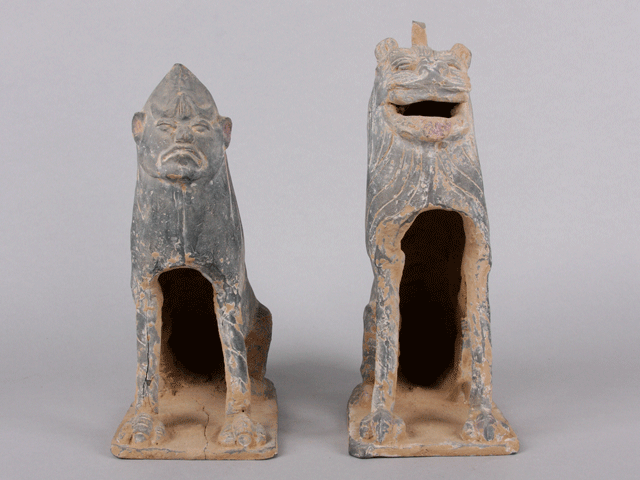
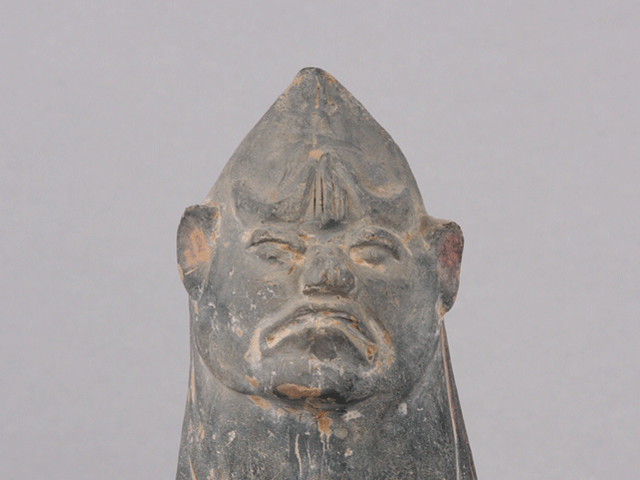
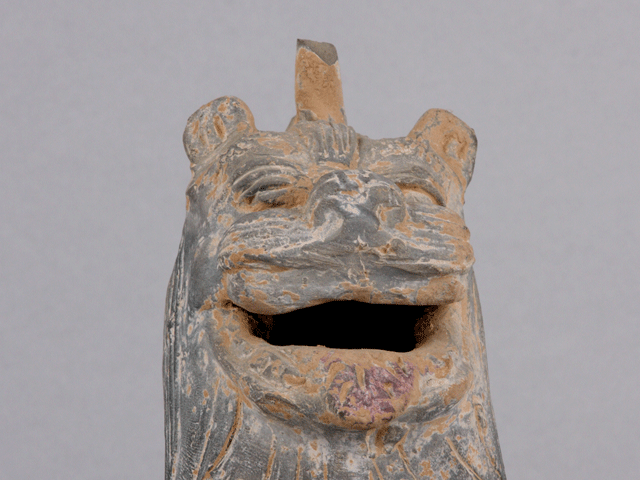
Above photographs by B. Bernard
See source code for copyright information. Page last revised on January 21, 2016. Please report problems to toh@unm.edu